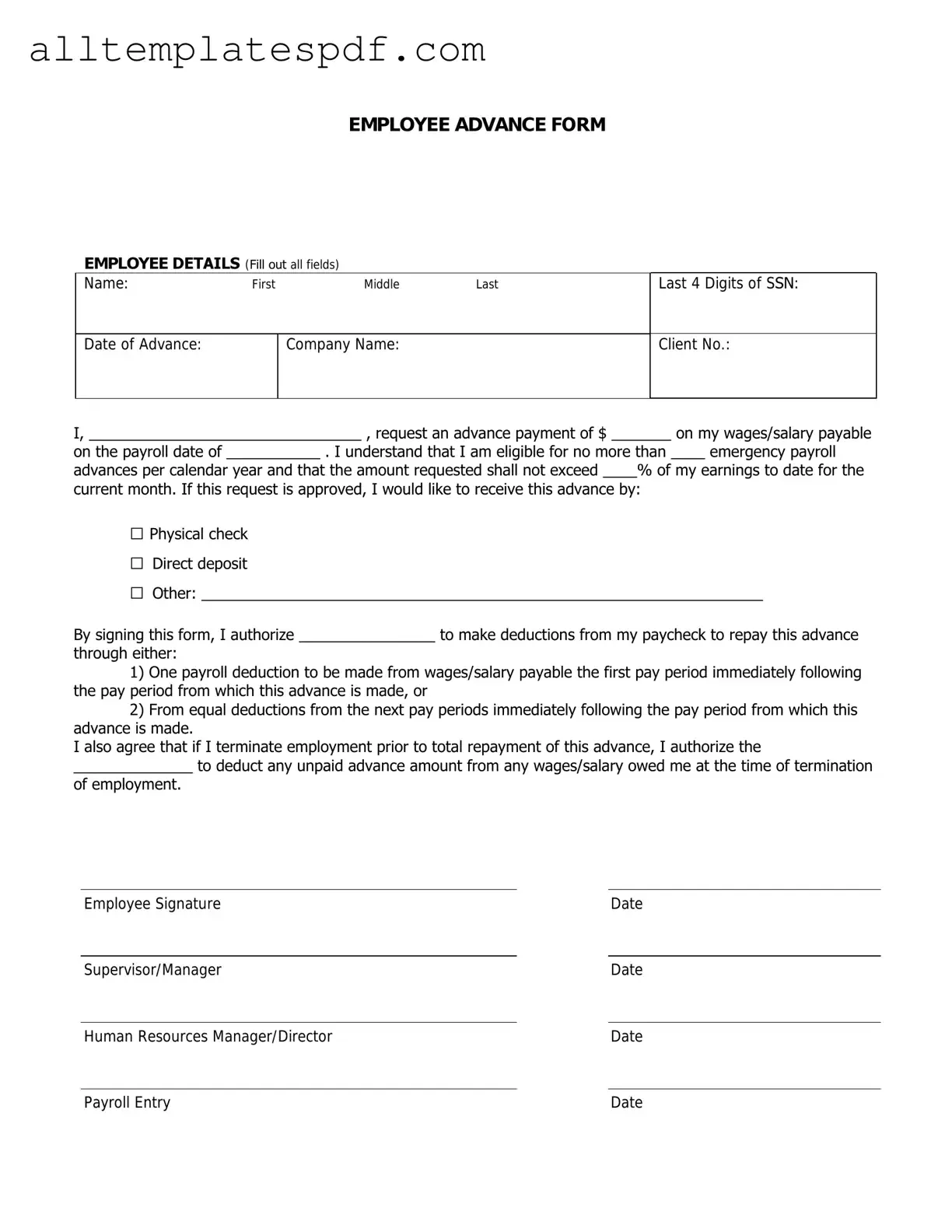Filling out the Employee Advance form can be straightforward, but many individuals make common mistakes that can delay processing. One frequent error is failing to provide accurate personal information. It's essential to ensure that your name, employee ID, and contact details are correct. Mistakes in this section can lead to confusion and delays.
Another common mistake is not specifying the purpose of the advance clearly. The form should include a detailed explanation of why the advance is needed. A vague description may lead to questions from management and slow down the approval process.
Many people also overlook the importance of including the exact amount requested. Requesting too much or too little can raise red flags. It’s best to calculate the necessary amount carefully and justify it in the application.
Additionally, some individuals forget to attach required documentation. Supporting documents, such as receipts or estimates, can strengthen your case. Without these, the request may be denied or returned for more information.
Another mistake is neglecting to review the company’s policy on advances. Each organization may have specific guidelines regarding eligibility and repayment terms. Not adhering to these can result in an automatic rejection of the request.
Submitting the form without a signature is another oversight that can lead to complications. A signature is often required to validate the request. Ensure that you sign and date the form before submission.
Lastly, people sometimes fail to follow up on their requests. After submitting the form, it’s a good practice to check in with the appropriate department. This can help address any issues that may arise and keep the process moving smoothly.
